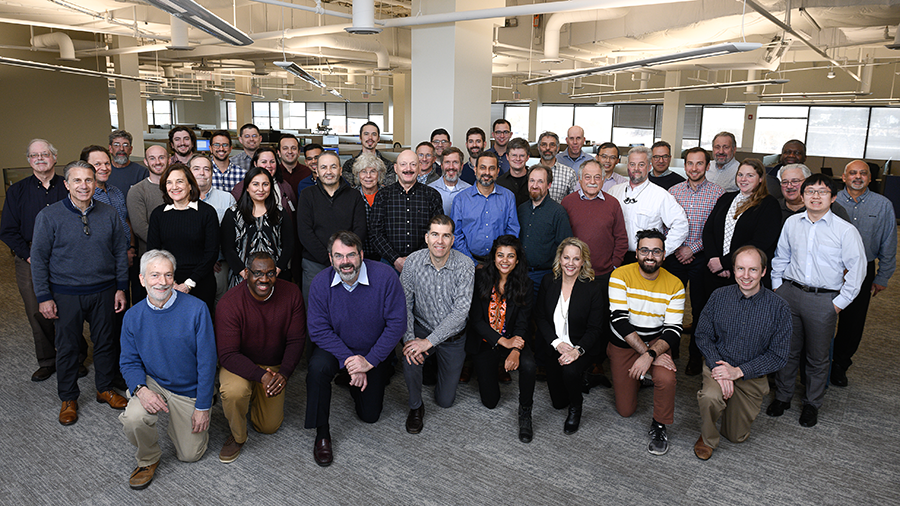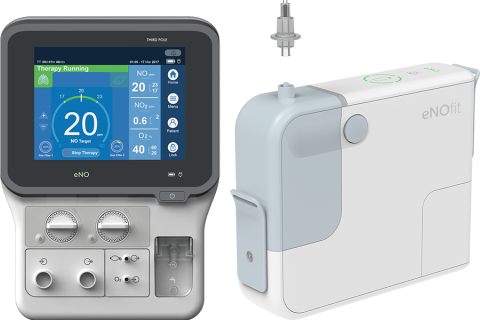Electrifying Invention Can Save Young Lives and Ease Chronic Lung Conditions
February 5, 2024
Nitric oxide (NO) brings life to life. It is a colorless, highly diffusible gas that is produced naturally by nearly all life forms. Our every thought is in some way made possible through the action of NO on neurons in our brain and the blood vessels that provide supporting nutrients. NO also strongly affects blood pressure, sexual functioning, and how our body processes food. It is a signaling molecule that influences various events inside cells and coordinates processes among cells, including whole-body system-level behaviors.
Respiratory issues affect millions of individuals, robbing them of their health, happiness, and in some cases, their lives. Asthma, chronic obstructive pulmonary disease (COPD), pulmonary hypertension, birth asphyxia, lung cancer and sleep apnea are just a few of the respiratory conditions that pose major threats. Since the approval of inhaled NO (iNO) by the U.S. Food and Drug Administration (FDA) in 1999, doctors have been administering it in low concentrations (typically 20 parts per million) to save the lives of the youngest patients who are in acute respiratory distress. NO is supplied to hospitals in large tanks of compressed gas and administered through bulky and complex devices by trained respiratory clinicians. Unfortunately, the cost of NO has limited its use to large university centers and children’s hospitals. A big concern is whether nonspecialized hospitals can use NO efficiently to meet patient demands while remaining financially stable.
Inventing a new treatment and using it to care for a critically ill infant requires a careful balance of risk and reward. The late Dr. Warren Zapol, an anesthesiologist and researcher at Massachusetts General Hospital (MGH), led the team that discovered the effects of low concentrations of iNO on pulmonary vasculature. Zapol’s team conducted key trials for FDA approval of NO, and he and his colleagues published a report on the world’s first treatment of a newborn baby with iNO. This work was done with industrial partners that licensed MGH’s method-of-use patents and built large factories to produce tanks of medical-grade NO.
After Zapol read about high NO measurements taken by air force planes near lightning bolts, he was struck by an idea: Electricity could be used to make NO from the large amounts of nitrogen and oxygen in air, just as lightning makes NO in the atmosphere. It occurred to him that one could copy this phenomenon using electricity to make NO from the large amounts of nitrogen and oxygen in air in the same way. His team at MGH made prototypes of the technology and confirmed in animals and humans that the electrically generated NO was the same as NO gas produced in factories.
In 2014, Zapol and his son formed the Waltham, Massachusetts–based company Third Pole Therapeutics to put the elder Zapol’s pioneering research on iNO therapy into practice. Third Pole’s device makes NO on the spot instead of storing pre-made gas, which removes the costs of producing, distributing and storing compressed-gas cylinders. The technology is based on that simple concept — a small spark of electricity recombines nitrogen and oxygen from the air to make a small amount of therapeutic NO gas. Since the lunchbox-sized device needs only air and electricity to work, hospitals can store it until it is needed.
The hospital device is likely to change how respiratory failure in newborns is treated, in addition to helping many adults with chronic lung disorders. Therefore, the company is also working on a portable device for in-home use to help patients with chronic lung conditions (e.g., COPD, lung fibrosis) for which NO can potentially provide relief.
“We will bring the benefits of inhaled NO to underserved and rural communities in the United States and European Union, as well as the rest of the world, with the improvements our technology provides over gas tanks,” said Dr. Greg Hall, Vice President of Core Technology at Third Pole Therapeutics.
Zapol’s research was supported by grants from NCATS at the National Institutes of Health.
Development of a prototype of the portable device was aided by a Direct-to-Phase II Small Business Innovation Research (SBIR) grant from NCATS, followed by a Phase IIB award, which allowed the Third Pole team to take the technology used in the hospital NO generator and make it into a compact wearable device. “NCATS SBIR funding was key to our ability to launch the company and execute on a rapid timeline that took us from whiteboard drawing to a functioning, integrated prototype in a year,” said Hall. "We believe that this technology will enable affordable and equitable access to the life-saving benefits of NO," Hall added.
Third Pole’s next milestone is completion of design verification testing, followed by clinical evaluation of the NCATS-funded device.




